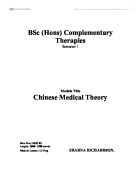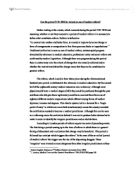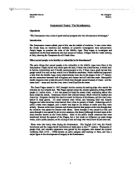Yang; Light, sun, brightness, activity, heaven, round, time, east, south and left.
Yin; Darkness, moon, shade, rest, earth, flat, space, west, north and right.
The Basic Theory of Yin and Yang Describing Four Aspects of their Relationship
Yin and Yang oppose each other and at the same time have an interdependent relationship. Without Yang there is no Yin, and without Yin there is no Yang. Yang is totally immaterial and corresponds to pure energy, whereas Yin is completely the opposite being material and corresponding to matter.
“Yin is quiet, Yang is active. Yang gives life, Yin makes it grow… Yang is transformed into qi (energy), Yin is transformed into material life” (Quoted in Giovanni Maciocia, 1989, p.5)
The Yin and yang represent all the opposite principles in the universe. Because the principles of Yang correspond to creation and activity, it also naturally corresponds to expansion, which rises. The principles of Yin correspond to condensation and materialization, so it naturally corresponds to contraction, which descends. This therefore adds more qualities that belong to Yin and Yang:
Yang is: Immaterial; produces energy; non-substantial; energy; expansion; rising; above; fire.
Yin is: Material; produces form; growth; substantial; matter; contraction; descending; below; water.
The relationship and interdependence of Yin-Yang must always be remembered. There is a cyclical nature to Yin and Yang. According to this school of thought all phenomena change into their opposites in a never-ending cycle of reversal, and can be represented by this famous symbol called the “supreme ultimate” or ‘Tai ji’.
Four Aspects of Yin-Yang Relationship
There are 4 main aspects to the Yin-Yang relationship. These main points of interdependence are:
The Opposition of Yin and Yang
- Yin-Yang forms a unity and is complementary, although they are opposite stages of a continuum one principle produces the other.
Yin and Yang are opposite stages of either a cycle or of states of aggregation along a continuum. Everything in the natural world has an opposition; it is this very inner opposition that forms the force of all the changes, development and decay of things. Everything contains the seed of its opposite, and it is therefore incorrect to say something “is Yang” or “is Yin”. Everything leans towards Yin or Yang in relation to something else. For example, hot relates to Yang and cold relates to Yin, so the climate in Naples is Yang in comparison to the climate in Stockholm, however it is Yin in comparison to that in Algiers.
Everything contains Yin and Yang, although these are never present in a static 50/50 quantity, but in a dynamic balance, which is constantly changing. For example, human body temperature is nearly constant within a small range, but this is not the result of a static situation, it’s a dynamic balance of different opposite forces.
The Interdependence of Yin and Yang
- The small black and white spots represent the seed. Yang contains the seed of Yin and vice versa. (i.e. sickness has the seeds of health and visa versa)
Yin and Yang are interdependent, which means one cannot exist without the other, although they are opposites. Everything consists of opposite forces, although at the same time they depend on each other. For example, day is the opposite to night, and there cannot be activity without rest, energy without matter or contraction without expansion.
Mutual Consumption of Yin and Yang
- Yin and Yang are constantly in a changing state of balance, which is maintained by a constant adjustment of the necessary levels of Yin and Yang.
When Yin and Yang are unbalanced, they affect each other by changing their quantity to achieve a new balance.
There are four possible states of imbalance:
- Preponderance of Yin.
- Preponderance of Yang
When Yin is preponderant, it decreases Yang. (i.e. the excess of Yin uses Yang and vice versa)
- Weakness of Yin
- Weakness of Yang
When Yin is weak, there is in excess of Yang and vice versa.
Preponderance of Yin and weakness of Yang may appear the same, but they are not. It is a matter of what is primary and what is secondary. Preponderance of Yin is primary and as a consequence the excess Yin consumes the Yang. Weakness of Yang is primary and as a consequence Yin is in apparent excess. This is only relative to the deficiency of Yang, and the same applies to preponderance of Yang and weakness of Yin.
The inter-transformation of Yin and Yang
- Nothing is totally Yin or totally Yang. Yang changes into Yin and vice versa. (i.e. One is never totally healthy since health contains the principle of its opposite, sickness)
Yin and Yang transform into each other, however they are not static. This change only happens at a certain stage of development of something. Summer changes into winter, day changes into night, life into death, happiness into unhappiness, heat into cold and vice versa.
There are two conditions for the transformation of Yin into Yang or vice versa.
-
Internal Conditions: Things can only change through internal causes primarily, and external causes are secondary. Internal conditions have to be ripe in order for change to take place. For example, an egg changes into a chick with the application of heat only because the egg contains within itself the capacity of turning into a chick.
-
Time Factor: It takes time to reach that certain stage of development at which Yin and Yang can transform into each other. In the case of the egg, the chick will only hatch when the time is ripe.
Yin- Yang and the Structure of the Human Body
In clinical practice it is important to remember that every part of the body has a predominantly Yin or Yang character, however this character is only relative. For example, the chest area is Yang in relation to the abdomen (because it is higher), but Yin in relation to the head.
The following are the Yin-Yang characters of various body structures, organs and energies:
(Giovanni Maciocia, 1989, p.7)
Back- front:
All the Yang channels flow through the back. There function is to protect the body from exterior pathogenic factors, and they carry Yang energy. It is the nature of Yang to be on the exterior and to protect, whereas it is the nature of Yin to be in the interior and to nourish. The channels on the back belong to Yang and can be used to strengthen Yang, which gives resistance to exterior pathogenic factors, and it eliminates pathogenic factors after these have already invaded the body.
All the Yin channels flow through the front of the body (abdomen and chest). There function is to nourish the body and often tonify, these channels carry Yin energy.
Head- body:
All the Yang channels either end or begin on the head and they all meet and flow into each other. Yang energy tends to rise, just like heat and fire tend to rise. Because the head is at the top of the body, Yang energy (physiological or pathological) will rise to the head. This will cause red face and red eyes in pathological circumstances.
Yang pathogenic factors such as wind and summer heat also easily affect the head.
Points of the head area can be used to raise the Yang energy, because the head is the meeting place of all the Yang channels.
Because the rest of the body (chest and abdomen) is related to Yin its easily affected by Yin pathogenic factors such as cold and dampness.
Exterior- Interior:
The skin and muscles are the exterior part of the body, which relate to Yang. Its function is to protect the body from exterior pathogenic factors. The internal organs are the interior part of the body, and its function is to nourish the body.
Above- Below Waist:
Yang relates to the area above the waist, which is easily affected by Yang pathogenic factors such as wind. Yin relates to the area below the waist, which is easily affected by Yin pathogenic factors such as dampness.
Posterior- Lateral and Anterior- Medial Surface of Limbs:
The posterior- lateral surface of limbs is where the Yang channels flow, and the anterior- medial surface is where the Yin channels flow.
Yin and Yang and the function of the Zang Fu Organs.
Surrounding the core principles of Yin and Yang, the theory of the internal organs separates Chinese medicine from the other forms of medicine.
The Zang Fu theory describes the physiological function, pathological changes, and mutual relationships of every Zang and Fu organ. In Chinese medicine the Zang and Fu organs are not anatomical substances, they represent the generalization of the physiology and pathology of certain systems of the human body.
Zang and Fu consist of the five Zang and 6 Fu organs. The Zang organs include: the heart (including the pericardium), lungs, spleen, liver, and kidneys. The Fu organs include: the gall bladder, stomach, large intestine, small intestine, urinary bladder and the sanjiao (three areas of the body cavity).
The function of the Zang organs is mainly to manufacture and store essence of qi, blood and body fluid. The function of the Fu organs is mainly to receive and digest food, absorb nutrient substances, and to transmit and excrete wastes. The Zang organs store up essential qi and regulate its outflow. Whereas the Fu organs transform and transport substances without storing them and for this reason they may be over-filled but cannot be filled to capacity.
There is another category of organs called the extraordinary Fu organs. These include the brain, marrow, bone, vessels, gall bladder, and uterus. Although they are Fu organs their functions are similar to the Zang organs. However their physiological functions and pathological changes are closely connected with the Zang Fu organs.
The following charts provide an overview of the links used within the Zang-Fu system of diagnosis.
Zang Organs
Fu Organs
( from: www.orientalmedicine.com)
Yin and Yang and the Physiology and Pathology of the Human Body.
Physically Speaking:
The upper part of the body, the exterior part of the body, and the back are all related to Yang. Therefore the lower part of the body, the interior part of the body, and the abdomen are all Yin. The five Zang organs are Yin, and the six Fu organs are Yang. Within each organ, there is Yin and Yang aspects, such as heart- Yang, heart- Yin, kidney-Yang and kidney- Yin.
Physiologically speaking, Yin can be looked at as the substance aspect, and Yang can be looked at as the functional aspect.
Pathology:
There are Yin pathogens and Yang pathogens. Diseases caused by Yang pathogens usually have heat symptoms, whereas diseases caused by Yin pathogens usually have cold symptoms.
Except for Yin- deficient, which has heat symptoms, and Yang- deficient, which has cold symptoms.
A Patient Case Study Based on Yin and Yang Theory and Zang- Fu Organ Theory.
The Nature of the Main Problem:







